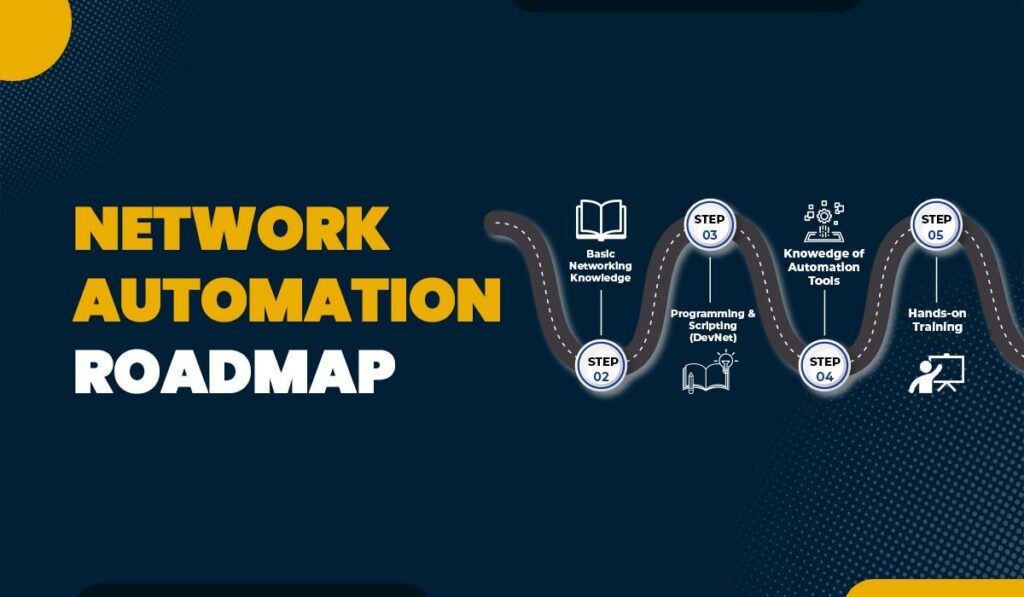Introduction
For anyone wishing to establish a career in the security domain, especially in networking, CCNP Security is the best starting point. It will prove your expertise and proficiency in handling network security issues as well as technical skills. To ensure that you are well equipped to perform better in interviews that are directed at you when you are entering the job market, you should practice CCNP Security Interview Questions that may be asked.
Whether you are a fresher or one with some experience, we have segregated this blog into two parts: First, the top 10 CCNP security interview questions and answers of the basic level, and the second part, the Top 10 CCNP security interview questions and answers of the advanced level. Furthermore, by the time you complete this post, you will be adequately prepared for a CCNP security interview and increase your chances of getting your dream job.
About CCNP Security
CCNP Security Certification is a highly regarded professional-level certification offered by Cisco Systems, the global leader in networking technology. It is perfect for network engineers who want to learn the fundamentals of network security, understand complex security solutions, and implement secure access controls to prevent data.
The CCNP Security Certification covers a wide range of topics from network security architecture to VPNs, firewalls, intrusions prevention, etc. To achieve this certification, you must clear two exams: CCNP Security core for which you should take CCNP Security Core Training and one of the Concentration exams in this domain. This certification helps professionals gain the skills to design, set up, and manage secure networks for businesses. It ensures that they can protect these networks from constantly changing cybersecurity threats.
Let’s get started with basic CCNP Security Interview Questions.
Basic CCNP Security Interview Questions and Answers
Here are the top 10 basic Interview questions on CCNP Security:
Q1. What is the difference between a classful and classless routing protocol?
When it comes to routing protocols, there are two main categories: classful and classless. The main difference between the two lies in how they handle IP addresses and subnet masks.
| Factor | Classful Routing Protocol | Classless Routing Protocol |
|---|---|---|
| Addressing | Uses fixed-length subnet masks (FLSM) | Uses variable-length subnet masks (VLSM) |
| Routing Updates | Sends periodic routing updates | Sends routing updates only when changes occur |
| Subnet Mask | Includes subnet mask in routing updates | Does not include subnet mask in routing updates |
| Route Summarization | Does not support route summarization | Supports route summarization |
| Example Protocols | RIP, IGRP | OSPF, EIGRP, BGP |
Q2. What are the different types of LAN traffic?
There are three main types of LAN traffic:
- Unicast: Traffic that is transmitted from one device to another individual device. Unicast traffic is used basically for transmission between two devices, say a computer and printer etc.
- Multicast: Message delivered from an individual device to more devices of a group. Multicast data is used in communicating from one single participant to numerous participants, for example, in streaming a video to various computer systems.
- Broadcast: The message is transmitted from one device to all the devices within the networked environment. Broadcast traffic is used for exchanging information between one device and all the devices that are connected to the network, for example, network broadcast.
Q3. Which command encrypts the password on a router?
The command to encrypt the password on a router is:
service password-encryption
This command encrypts all passwords on the router, making them more secure.
Example:
Suppose you want to set a password for the router’s console port. You would use the following commands:
Router(config)# line console 0
Router(config-line)# password cisco
Router(config-line)# exit
Router(config)# service password-encryption
In this example, the service password-encryption command encrypts the password “Cisco” that was set for the console port.
Q4. Why are the Cisco multicast routing protocols referred to as protocol-independent?
The Cisco multicast routing protocols (such as PIM and DVMRP) are referred to as protocol-independent because they do not rely on a specific routing protocol (like OSPF or EIGRP) to function. They can, however, work in conjunction with the multicast routing protocol can be used in conjunction with other routing protocols and hence is protocol independent.
For instance, PIM can work with OSPF, EIGRP, and BGP to forward multicast traffic. This makes PIM independent of a given routing protocol and thus usable in a wide variety of network circumstances in which it may be employed.
Q5. What is the role of Cisco Firepower in network security?
Cisco Firepower is a next-generation firewall (NGFW) solution. It comprises the functionalities of firewalls and side-by-side offering threat detection and protection features. It provides the possibility to analyze and deep packet inspection, application controlling, intrusion, and have a high level of Malware protection for the enterprise network.
Q6. What is the purpose of the Cisco Identity Services Engine (ISE)?
The Cisco Identity Services Engine (ISE) is a powerful policy management and control platform that enables consistent enforcement of access policies across wired, wireless, and VPN connections. It provides capabilities such as network access control, guest management, and profiling. The main purpose of Cisco ISE is to enhance the security of enterprise networks.
Q7. How does Cisco Web Security Appliance (WSA) help in web security?
Cisco WSA, or Web Security Appliance, is one of the web security solutions that enable an organization to control and secure web access. These features include URL Filtering, Web Reputation, Advanced Malware Protection, and data loss prevention for optimum Web threat solutions and ensure compliance with Web usage policies.
Q8. What is Cisco Email Security Appliance (ESA), and what does it do to secure emails?
The Cisco Email Security Appliance (ESA) is a comprehensive email security solution that offers protection against the major threats that organizations are facing across the corporate world today including spam, phishing, and malware attacks. It offers features such as spam and virus filters, data loss prevention mechanisms, encryption, and compliance features for safe and legal communication.
Q9. What roles do security monitoring and logging play in network security systems?
Logging and monitoring security activities are essential for identifying, investigating, and analyzing described security events. They offer insight into the activities that are ongoing in a network, assist in the detection of malicious activities, and ensure an organization complies with regulatory requirements. Products such as the Cisco Stealthwatch and Cisco secure network analytics, formerly known as Stealthwatch cloud, aid in this.
Q10. What are the different types of OSPF routes?
There are seven types of OSPF routes:
- Intra-Area Route: Such type of route is utilized within the single OSPF area. It can be better understood as a local route that makes routers in a certain locality communicate amongst themselves.
- Inter-Area Route: This type of route is used between different OSPF areas. It is similar to a highway which links various regions or areas together.
- Type 1 External Route (E1): This sort of route is utilized to connect OSPF to other forms of routing protocols, including RIP or IGRP. It is like a middle link that has the responsibility of linking OSPF with other routing protocols.
- Type 2 External Route (E2): This kind of route is also used to link the OSPF to other routing protocols; however, it is used for non-OSPF-connected routes. It is like a bypass that assists the routers in looking for the most convenient means of getting to a certain destination.
- NSSA Type 1 Route (N1): This type is used in Not-So-Stubby Areas (NSSAs), which are areas connected to the backbone area and also have external routes. NSSA Type 1 routes are applied for the advertisement of external routes within NSSA.
- NSSA Type 2 Route (N2): This type of route is also used in NSSAs, but it is used to advertise external routes that are not connected to the NSSA. NSSA Type 2 routes provide means to advertise external routes that are derived from other routing protocols.
These are the basic CCNP Security Interview Questions and Answers. Let’s see some advanced questions and answers now.
Advanced CCNP Security Interview Questions and Answers
Here are the most-asked advanced-level CCNP Security Interview Questions:
Q11. What is Cisco TrustSec, and what advantages may be derived from it?
Cisco TrustSec is known as the security architecture that is used to manage security on networks, with Cisco Systems focusing on segmentation and access control based on identity and roles. It employs security group tags (SGTs) to regulate and maintain access policies for devices, apps, or users, irrespective of their geographical location. Overall, Cisco trust sec can be said to play a crucial role in making network security simpler, more compliant, and less vulnerable.
Q12. What are the two techniques for minimizing the number of IBGP connections?
IBGP, or Internal Border Gateway Protocol, refers to the routing protocol that is responsible for the communication of routers within the same autonomous system (AS). There are two methods for reducing the number of IBGP connections:
- Route-Reflection: This method enables the router to redistribute the routes learned from one IBGP neighbor to another. It is similar to a mirror of routing from one single router to another router.
- Confederation: It further enables many IBGP routers to be clubbed into a single entity without having an impact on the overall performance of the routers. It is like a team that cooperates in achieving the results of minimizing the number of IBGP connections.
Q13. How can Cisco Secure Endpoint (formerly AMP for Endpoints) enhance endpoint security?
Cisco Secure Endpoint in the past, also known as AMP for Endpoints, is an advanced endpoint protection solution that has antivirus and anti-malware features along with device control. It employs the use of big data and artificial intelligence to identify, block, and counter new-generation threats such as file-less malware and zero-day attacks. Cisco Secure Endpoint plays the role of enhancing the security of endpoints and, in general, security of the network.
Q14. Describe Software-Defined Access (SD-Access) and its advantages in safeguarding the network.
Cisco Software Defined Access (SD-Access) is an intent-based networking solution for ease of network management and security. It employs policies and automates the delivery of wired as well as wireless access in order to enable a scalable, consistent, and secure access experience. With SD-Access, micro-segmentation is supported, access control and end-to-end visibility in the network are provided helping to minimize the attack surface and improve organizations’ security posture.
Q15. What role does Cisco ISE play in relation to other security technologies for improving the security of the network?
Cisco ISE can support a number of security solutions meaning that a company can use it as its one-stop security solution. Some examples of integrations include:
- The integration of security applications with Cisco Secure Firewall, formerly known as ASA, is required to provide consistent policy enforcement.
- Integration with Cisco Security, that is, Cisco Secure Endpoint otherwise known as AMP for Endpoints for improved endpoint security.
- Integration with the Stealthwatch solution for any organizational network visibility and threat discovery.
- Integration with Cisco Umbrella for cloud-based security and web filtering integration.
These integrations allow an organization to capitalize on the combined strength of Cisco’s security solutions and also enhance its security infrastructure.
Q16. Which route will be preferred if a router learns about the same network prefix through RIP, IGRP, EIGRP, and OSPF?
In case a router receives information about the same network prefix from more than one routing protocol, there is a process called route selection. Administrative distance (AD) is the way the routing protocol chooses one specific route over another.
The AD values for each routing protocol are as follows:
- RIP: 120
- IGRP: 100
- EIGRP: 90
- OSPF: 110
The router will prefer the route with the lowest AD value. In this case, the router will prefer the EIGRP route because it has the lowest AD value (90).
Q17. How can security be improved in data centers and cloud environments with the help of Cisco Secure Workload?
Cisco Secure Workload, formerly known as Tetration, is the next-generation security and applications visibility solution designed for Data Center and Cloud environments. Deep packet inspection, Telemetry, and Machine learning are used in it to offer real-time visualization, workload identification, and micro-segmentation. Cisco Secure Workload assists companies with protecting their high-impact applications, applying compliant security policies, and identifying threats and threat remediation in multi-cloud environments.
Q18. Explain the concept of Cisco SecureX and its role in integrated security.
Cisco SecureX is an integrated security platform that is cloud-native and assists in connecting the entire Cisco security ecosystem as well as third-party solutions. This solution offers a unified view of threats, more effective management of security operations, and automated responses to threats. Cisco SecureX was designed to facilitate interoperability between different security products in the Cisco security portfolio and the customer’s environment, resulting in optimal security outcomes.
Q19. Why Use Policy-Based Routing?
Policy-based routing is applied to manage and steer traffic according to specific rules. Here are some reasons why you might use policy-based routing:
- Control Traffic Flow: Policy routing is a way of routing packets along specific paths depending on features such as the source or destination address and/or protocol or specific times of the day.
- Implement Business Policies: This is how you can force business rules, for example, all traffic from a particular department should go to this server.
- Improve Network Performance: The policy-based routing can help in controlling the flow of traffic in that it directs some forms of traffic to the faster path.
- Increase Security: One can drop traffic flow from a certain source/destination or forward it to the security appliance for inspection.
Q20. Explain the role of Cisco Threat Response in incident response and threat hunting.
Cisco Threat Response is a security orchestration, automation, and response (SOAR) platform that enables security teams to streamline their incident response and threat-hunting processes. It integrates with various Cisco and third-party security solutions, providing a centralized view of threats, automated playbooks for incident response, and collaboration capabilities to enhance the efficiency and effectiveness of security operations.
These are the top most-asked CCNP Security Interview Questions and Answers.
Conclusion
By thoroughly understanding the CCNP security interview questions and answers covered in this blog post, you will be ready to navigate your CCNP security interview and demonstrate your advanced knowledge and skills in network security. Whether you are a beginner or an experienced candidate, the information provided here will help you tackle the interview with confidence and increase your chances of landing your dream job in the security domain.





